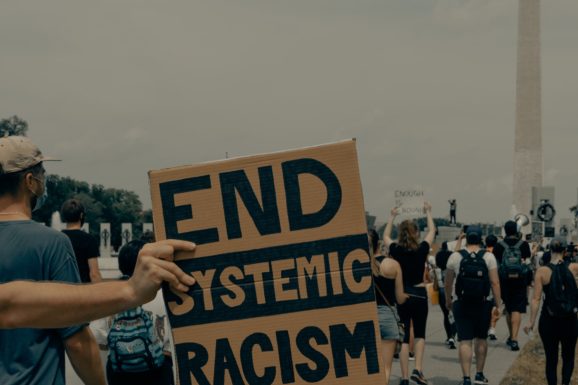There is an enormous wealth gap in the U.S. between White and Black Americans today. With this gap come many dangerous misconceptions for the reasons behind the trend. These fallacies are dangerous because they take the focus away from the main mechanisms at play and instead place the blame on the effected population.
In a recent article, Axios outlined the most popular myths about the Racial Wealth Gap between Black and White Americans and brings to light evidence for why these myths are just that, myths. Read a few examples below.
The myth of closing the racial wealth gap through education
Though a more equal distribution of education between Black and White Americans could definitely contribute to closing the wealth gap, this is by no means the sole reason for the massive chasm that currently exists. Studies show that Black households in America with heads who have completed a college degree have lower net worth than white households headed by someone with less than a high school education. For this reason, we can dispel that the reason for the wealth gap is simply a product of lower education among Black Americans.
The myth of closing the racial wealth gap through personal responsibility
The myth that Black Americans can close the racial wealth gap through “personal responsibility” comes in part from a misunderstanding of what wealth is. Regardless of efforts led by Black Americans to build wealth, they fall short of their White counterparts due to historic discriminatory policies and the gaps in the intergenerational transfer of wealth.
The myth of closing the racial wealth gap through homeownership
As of the first quarter of 2020, 44% of Black families owned their own home compared to 73.7% of White families. Many believe that homeownership will build wealth, but US homeownership history shows White families often benefit from federal housing programs and secure mortgages while Black families were often denied loans from a bank and have to rely on predatory loans at extreme interest rates. While homeownership can build wealth for some, it is important to recognize that it can also detract wealth from others.
The myth of closing the racial wealth gap with individual accomplishment
Although individual Black Americans have seen increased success, the overall wealth gap has widened. As of 2016, 15% of White families are considered to hold the millionaire status. This has increased by 8% over 24 years, starting at 7% in 1992. This is in comparison to the increase from less than 1% of Black families possessing a million dollars in assets in 1992 to less than 2% in 2016. There is still a very clear discrepancy at play that cannot be diminished by pointing to a few success stories.
The myth of closing the racial wealth gap by investing in Black-owned banks
White owned assets in US financial institutions are quantified at 17.71 trillion and Black owned assets are quantified at 5.2 billion. To put this in perspective, it would take approximately 30 years of every dollar earned by all of the Black-owned businesses invested in Black-owned banks for their assets to surpass those held by JPMorgan Chase in the first quarter of this year. The thought that the racial wealth gap can be combated through Black families and businesses investing in Black-owned banks is ignorant and essentially impossible.
The myth of closing the racial wealth gap through entrepreneurship
Black entrepreneurs are less likely to make it past the initial funding stage than their white counterparts. The Federal Reserve Bank’s 2016 report on minority firms stated that 40% of firms owned by people of color received the full amount of capital sought out. This is in comparison to 68% of nonminority-owned firms being successful in receiving the amount of capital sought out. Once again, the systems in place which prioritizes non-minority members of this society are the reasons for this wealth gap.
“The wealth gap is the product of centuries of inequality and racism that has grown too large to be impacted significantly by individual actions, achievements or choices”
Axios: 10 myths about the racial wealth gap
The current racial wealth gap is the consequence of many decades of racial inequality that imposes barriers to wealth accumulation. There are persistent systemic differences in economic opportunity based on race that we cannot excuse any longer. Disproving these myths is one of the first actions we can take. Once we understand the reality of the cause of this massive economic imbalance, we will be better equipped to properly combat it.
Though this has been an issue for as long as our country has existed, the heightened conversations around racial justice over the past few months have resulted in the increased need for brands and companies to integrate this subject into their organizations. The number one way to do this is through education. This means hosting dialogues, asking questions, doing the research, and learning from each other. Reach out to our team here at Handshake for further information around building the social impact of your company.
